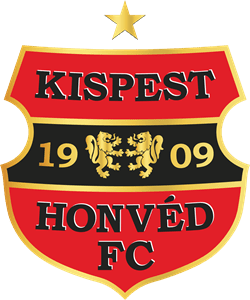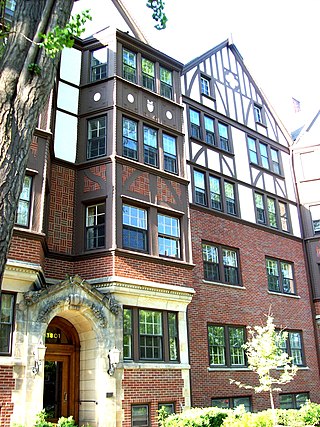
Ohio is a state in the Midwestern United States. Of the fifty U.S. states, it is the 34th-largest by area. With a population of nearly 11.8 million, Ohio is the seventh-most populous and tenth-most densely populated state. Its capital and largest city is Columbus, with the Columbus metro area, Greater Cincinnati, and Greater Cleveland being the largest metropolitan areas. Ohio is bordered by Lake Erie to the north, Pennsylvania to the east, West Virginia to the southeast, Kentucky to the southwest, Indiana to the west, and Michigan to the northwest. Ohio is nicknamed the "Buckeye State" after its Ohio buckeye trees, and Ohioans are also known as "Buckeyes". Its state flag is the only non-rectangular flag of all the U.S. states.

Dover is a city in Tuscarawas County, Ohio, United States, along the Tuscarawas River. The population was 13,112 at the 2020 census. It is a principal city of the New Philadelphia–Dover micropolitan area, approximately 68 miles (109 km) south of Cleveland.

The Cleveland metropolitan area, or Greater Cleveland as it is more commonly known, is the metropolitan area surrounding the city of Cleveland in Northeast Ohio, United States. According to the 2020 United States Census results, the five-county Cleveland–Elyria Metropolitan Statistical Area (MSA) consists of Cuyahoga County, Geauga County, Lake County, Lorain County, and Medina County, and has a population of 2,088,251, making it the 34th most populous metropolitan area in the United States, and the third largest metropolitan area in Ohio. The metro area is also part of the larger Cleveland–Akron–Canton Combined Statistical Area with a population of over 3.6 million people, the most populous statistical area in Ohio and the 17th most populous in the United States.

Budapest Honvéd Football Club, commonly known as Budapest Honvéd or simply Honvéd, is a Hungarian sports club based in Kispest, Budapest, with the colours of red and black. The club is best known for its football team. Honvéd means the Homeland Defence. Originally formed as Kispest AC, they became Kispest FC in 1926 before reverting to their original name in 1944.

Leslie Horvath was an American football quarterback and halfback who won the Heisman Trophy while playing for Ohio State University in 1944. Horvath was the first Ohio State player to win the Heisman, an award given to the best college football player in the United States. The school retired his jersey number 22 in October 2000.

Glenville High School is a public high school in the Glenville area on the East Side of Cleveland, Ohio. The school is part of the Cleveland Metropolitan School District. The school originally resided at the former Oliver Wendell Holmes school which formerly sat on the northeast corner of E. 105th and St. Clair then later moved to Parkwood and Everton in October 1904 as population grew. The current building was built in 1964 and is located at E. 113th and St. Clair.

Buckeye–Shaker is a neighborhood on the East Side of Cleveland, Ohio. It encompasses two subneighborhoods: in its south and west the old Buckeye neighborhood and in its northeast the Shaker Square neighborhood which is centered on an historic shopping district and an eponymous rapid transit station, located at the intersection of Shaker and Moreland Boulevards, on the light rail line that connects the city of Shaker Heights to downtown Cleveland. From the early to mid-20th century, the Buckeye Road neighborhood was known as Little Hungary, serving as the historic heart of Cleveland's Hungarian community, which at one time was the largest in the world outside of Hungary and for years has been almost completely African-American. Shaker Square, continues to be known as one of Cleveland's most notable neighborhoods, in terms of shopping, dining, architecture, education of its residents, participation in civic life, diversity and quality of living.

Magyar Testgyakorlók Köre is a multi-sports club from Budapest, founded in 1888. It has sections for football, handball, basketball, volleyball, futsal, ice hockey, water polo, cycling, gymnastics, athletics, fencing, canoeing, boxing, wrestling, swimming, rowing, karate, taekwondo, sailing, speed skating, skiing, table tennis, tennis and chess.
Zoltán is a Hungarian masculine given name. The name days for this name are 8 March and 23 June in Hungary, and 7 April in Slovakia.

The Hungary national handball team is administered by the Hungarian Handball Federation.
The Hungary women's national handball team is the national team of Hungary. It is governed by the Hungarian Handball Federation and takes part in international handball competitions. The team won the World Championship in 1965 and the European Championship in 2000.
Takács is a Hungarian language occupational surname. It comes from Hungarian "takács" ("weaver"), which is derived from Slavic *tъkačь. Spelling variants include Takacs, Takach, Takats, and Takac. The name may refer to:

The following outline is provided as an overview of and topical guide to the U.S. state of Ohio:
The 2011–12 Ligakupa was the fifth edition of the Hungarian League Cup, the Ligakupa.

Hungarian Americans are Americans of Hungarian descent. The U.S. Census Bureau has estimated that there are approximately 1.396 million Americans of Hungarian descent as of 2018. The total number of people with ethnic Hungarian background is estimated to be around 4 million. The largest concentration is in the Greater Cleveland Metropolitan Area in Northeast Ohio. At one time, the presence of Hungarians within Cleveland proper was so great that the city was known as the "American Debrecen," with one of the highest concentrations of Hungarians in the world.
The following lists events in the year 2011 in Hungary.












